
The Olympus 75 1.8 Lens Review on the OM-D E-M5
By Steve Huff
Just when you think that Olympus could not release yet another winning lens they bombard us with a super fast portrait lens that is built to the same quality standard as their wonderful 12mm f/2 and 45 1.8. In fact, this 75 1.8 has so much glass inside it is the most solid feeling of the pro lens line up from Olympus. It feels REALLY nice and it looks gorgeous on the OM-D, even though it is a bright silver color. As soon as I heard about the 75 1.8 quite a few months back I started to salivate because I was thinking..wow..“imagine the depth of field we can get with this lens”. Then I thought..”wait..this will be like shooting a 150mm focal length equivalent..that is LONG”. When I opened the box up and held this lens in my hands my thoughts were “wow..Olympus has raised the bar”.
I love what Olympus has been doing for the past 3 years. They started with the super fun PEN EP-1, then EP-2, then E-P3 and when they released the OM-D E-M5 they changed the M4/3 game more than Panasonic has ever done. Olympus has a charm about them, at least for me. The company, the history, the passion and dedication all show and they seem to know what they are doing, especially lately. Their OM-D has taken off in a big way with so many photographers embracing the camera and system. I am happy to see them push the envelope in this camera market/niche. This lens is no exception but is it a lens for me? For you? Read this quick review to find out my thoughts..
The Olympus 75 1.8 at f/1.8 – wide open and super sharp. Bokeh that looks pleasing and a character that stands toe to toe with legends such as the Nikon 85 1.4.
Loooong…
That has always been my problem. The longer focal lengths. Back in the day I was a huge fan of the Nikon cream machine 85 1.4 and owned three of them when I shot Nikon. Not all at one time but over a period of 6 years or so. The reason I had three of them is because I realized I rarely used that focal length and at the time I was shooting it on a crop sensor APS-C camera so the equivalent was around 130mm or so. I always found it a bit long for me so it rarely came out except for the rare headshot here and there.
When I sold it I then would miss the amazing creamy look it would give me and I would re-buy it vowing to keep it only to sell it once again after getting no use.
So with this Olympus 75 being 150mm equivalent I wondered if I could even find shots to take to fill this review! I am so used to shooting Leica and wider primes such as 28, 35 and 50 than a 150mm lens seemed a bit long for what I shoot but I just had a feeling that this lens would be special so I plopped it on my OM-D and left it there for weeks. My issue is I am not always off traveling and seeing exotic sights so I have to settle in Phx AZ for photo pops, and there are very few. Still, I decided to stay positive and find things to shoot that would show off the quality of this lens.
–
It’s all about the eyes. We all hate cat shots right? But this one with the 75 is a bit different. 🙂 Shot through my dirty back window.
This review will be short, much like my review for the Olympus 45 1.8 lens. Why? Well, there is not much to say because when a lens or camera is this good there are so few negatives to rant about that all you have to say is how good it is. This 75mm falls into that category. The lens is about as good as it can be and it shows more than ever that the “little camera that could”, the OM-D E-M5 is a serious as can be tool. The only ones talking smack about the OM-D these days are those who just hate it for its sensor size. They never really tried it or used it but they poo poo it all the time. The fact is that it is an incredible tool for the price and many pros have picked it up as well as many Leica shooters who use it beside their Leica.
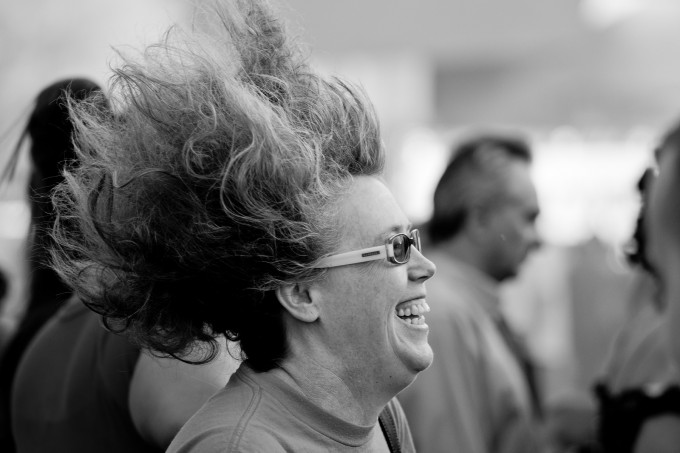
Don’t take my word for it, see the proof in this write up from one of my fave photographers, Gary Tyson. This guy is good and he knows how to use his OM-D!
–
The 75 1.8 at f/3.5. This lens is superb wide open at gets a little better stopped down a tad. Here the contrast, color and sharpness are pretty damn good. This OM-D E-M5 rocks.
–
But it is sharp as you will ever need.
The last time I used 150mm or longer was when I would take trips to the local Zoo to shoot the Orangutans. With the weather cooling down in Phoenix I decided to take a couple of trips to the zoo and see if I could use this lens for getting any kind of creative shots of the animals. I am not a huge fan of seeing animals in cages but it does sometime make for a challenge because I always try to get shots from the zoo that look different from every one elses typical zoo shots. I knew the 75 1.8, especially if shot wide open when possible would allow me to get some pretty cool images. I used to get images that looked like studio portraits using an old Nikon D2Hs and 70-200..yea, that was my old life…a DSLR lover many years back. With the OM-D it is so much nicer and lighter..a joy to use and the results are even better than my huge set up back then.
At 1st, my main concern was if this lens was sharp at 1.8 or if it was one of those softies wide open that needed to be stopped down to f/2.8 to get decent sharpness. I was hoping not because this lens costs $899 which is a pretty big chunk of change for a Micro 4/3 lens. With the 12mm f/2 coming it at $799, the 45 1.8 at $399 (which is a steal) and this one at $899 it would set someone back about $3100 for a complete kick ass OM-D set up. Add another $170 for a cool and my favorite barton1972.com strap and Gariz OM-D Case and you would be the envy of all of your micro 4/3 friends. So the ultimate OM-D setup? $3300. Quite expensive but then again, this camera and these three lenses can do just about anything you need and give you amazing IQ as well.
The lens is SHARP. Even at 1.8. My concern was squashed when I saw this one..
This guy again but in color..out of camera color. You can see the Bokeh quality behind the fence as the trees melt into a blob of green. The face of the monkey is sharp and the way this camera and lens renders the “portrait”…well, it falls into the “magical” category much like many Leica lenses do.
So to say this lens is quality throughout is correct. But what about negatives? Well, let me think…
- The price is steep at $899. But if you look at M4/3 and the OM-D as a tool that can do anything the big guys can do then it is not expensive but inexpensive. If you value size over weight, it is inexpensive. This is a hunk of glass so the price is justified by the quality. Expensive? Yes. Worth it? Yes, if you like this focal length.
- It’s large for Micro 4/3 but still smaller than any Nikon or Canon 85 1.4 lens. It’s not too heavy so it is kept light.
That is about it. As far as negatives go I really see none. This lens is superb.
Handling, AF Speed, MF use and overall joy of use..
As I said above the lens is larger than most Micro 4/3 lenses but I found it more pleasant to hold and use than the even larger and more expensive Panasonic 12-35 Zoom. It is light, feels nice in the hand and the AF performance is very good. When you get to lenses like this with a wide aperture and longer focal length the AF speed will be slower than something like the 12mm f/2 which I found to be the fastest to AF lens on the OM-D yet. The 75 performs in the AF dept just as well as any other lens like this on any other camera.
Again, do not just take my word for it..Check out the Amazon reviews for this lens. As of this writing this lens has a perfect 5 star average and 6 reviews total. Not many but the owners appear to LOVE it just as much as I do.
As for manual focus this is a focus by wire lens but it feels really smooth and is no problem to focus. It has a somewhat short focus throw and some of the images on this page were shot using manual focus, some auto focus. I enjoyed both experiences and had no issues dialing in MF on the OM-D E-M5.
Here are a few more image samples. I will be adding more to this page over the next day or two with a couple of portraits as well. For now I have mostly my Zoo trip shots but this can give you an idea of how this lens performs. EXIF is embedded as well.
This was a quick snap in my living room at night at ISO 2500 with grainy B&W mode enabled. 1/30s.
–
f/1.8, ISO 2000, 1/60s – The turtle peeks his head out and I snap :)You can see how shallow the depth of field is here.
–
f/3.5 at ISO 200 – love the way this camera handle light…
–
f/2.2, ISO 1250, 1/200s. I feel so bad for these guys. This is not where they should be living and they know it as well. You can see quite a bit in their eyes. I believe this was an OOC using “Monochrome” in the color settings.
–
Video Performance of the Lens on the OM-D E-M5
This lens can shoot amazingly crisp and sharp video. In low light it will hunt a little but in good light it is pretty solid and the best thing about it is that it is silent. Optimized for video you will not hear any creaks, grinds or noise at all. Below is a quick video sample using the OM-D E-M5 and this lens in my usual low light testing grounds at the local Aquarium, which is a very challenging place to get images and video.
–
My final word on the Olympus 75 1.8 Lens
This lens is an all out Olympus masterpiece. It is well made, it looks sexy and feels good on the camera. The performance is there and up close it does amazingly well. While I did not post a real portrait of a human yet, the couple I did post of the Monkey show the qualities of this lens. If you want sharp performance, shallow depth of field and a serious portrait tool for your OM-D, this is as good as it will get. Just remember this lens will give you a 150mm equivalent so you are not really shooting a 75. This is a telephoto lens and you need to step back to get some shots with it. At $899 the cost is high but when you compare it to lenses like the Nikon 85 1.4 it is not really expensive.
After shooting with the OM-D for many months I can safely say that the quality this camera puts out is ridiculously good. The only thing you lose shooting this over an APS- or full frame is some shallow depth of field effects with lenses. The 75 fixes this with a long lens and wide aperture. Bravo once again to Olympus for creating this superb lens. It may not be for everyone but one thing is a fact, it delivers on performance, build and style.
–
Where to buy the Olympus 75 1.8?
I have site sponsors that are some of the best dealers of camera gear in the USA and world. Below are link to my fave dealers who sell Olympus products. B&H Photo, Amazon and PopFlash. All superb with customer service, sales experience and overall experience. You can not go wrong ordering from the links below.
You can buy the Olympus 75 1.8 at B&H Photo HERE
You can buy the Olympus 75 1.8 at Amazon HERE
My other sponsor who sells Olympus is PopFlash.com and they also sell the lens.
…A few more from the 75!
–
More thoughts on the OM-D E-M5 as a DSLR replacement.
So, can the OM-D replace a DSLR system? OF COURSE it can but there are some things a DSLR will do better than the E-M5. For example. Shallow depth of field is using a full frame sensor. If you want uber cream and shallowness then nothing can replace a full frame sensor and fast lens. No way around it. The OM-D can get these effects as well with the 45 1.8 and now 75 1.8 but not to the same effect as a full frame sensor with fast glass. Also, the OM-D E-M5 is superb with high ISO (see my review here) but there are some current DSLR’s that will do better at ISO 6400 and up. The question you have to ask yourself is “how high of an ISO have I ever shot an image at”? Chances are it is 3200 or under, even 1600 or under. Not many people shoot at over 1600 in real world use. In this area, the OM-D is fantastic. The sensor in this camera has been tested by DXO and it matched the Nikon D700in a couple of areas. That is how good this sensor is. Also remember that with the 75 1.8 you will get the DOF of a 3.8 lens but the light gathering of a 1.8 lens.
One other area that would most likely be reserved for pro shooters is sports performance. If sports is your thing you will get fastest focus tracking from a top end pro DSLR. Period. But most who are interested in the OM-D are NOT pros. 95% of those who read my site are NOT pros. We are enthusiasts who love photography AND gear. It is a hobby for most and for us, this is a dream camera that is the perfect combo of camera, price, lenses and usability. The video rocks as well 🙂
So if you are NOT a pro who needs full frame qualities and do NOT shoot sports for a living then an OM-D E-M5 with the 12, 45, 75 set of lenses can easily match any DSLR output for image quality with a little less shallow DOF. FACT.

HELP ME TO KEEP THIS SITE GOING AND GROWING!! IT’S EASY TO HELP OUT & I CAN USE ALL THE HELP I CAN GET!
PLEASE Remember, anytime you follow my links here and buy from B&H or AMAZON, this helps to keep my site going. If it was not for these links, there would be no way to fund this site (and the cost these days to keep it going is pretty damn high), so I thank you in advance if you visit these links. I thank you more if you make a purchase! I have nifty search bars at the upper right of each page so you easily search for something at either store! I currently spend 10-14 hours a day working on this site and the only way that I can pay for it is with your help, so thank you! Currently my traffic has been increasing but my funds to pay for the site has been decreasing, so any help would be GREATLY appreciated!
Even if you buy baby food, napkins or toothpicks at Amazon it helps this site, and you do not pay anything extra by using the links here. Again, you pay nothing extra by using my links, it is just a way to help support this site, so again, I thank you in advance ![]() More info is here on how you can help!
More info is here on how you can help!
If you enjoyed this article/review, feel free to leave a comment at the bottom of this page and also be sure to join me on twitter, my facebook fan page and now GOOGLE +!
Also, you can subscribe to my feed at my subscribe page HERE and read these posts in your browser or news reader!



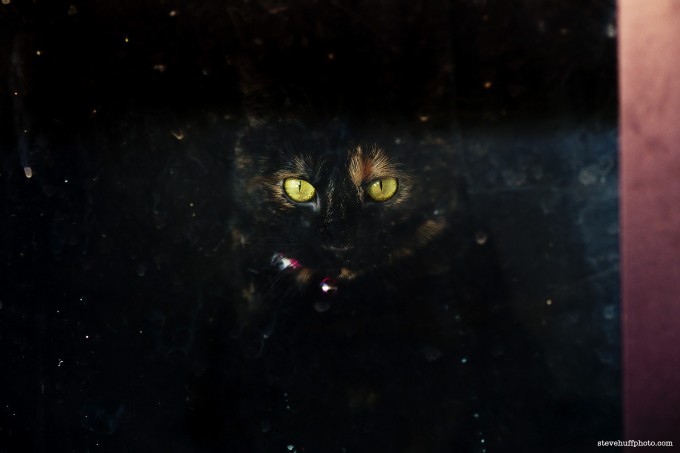
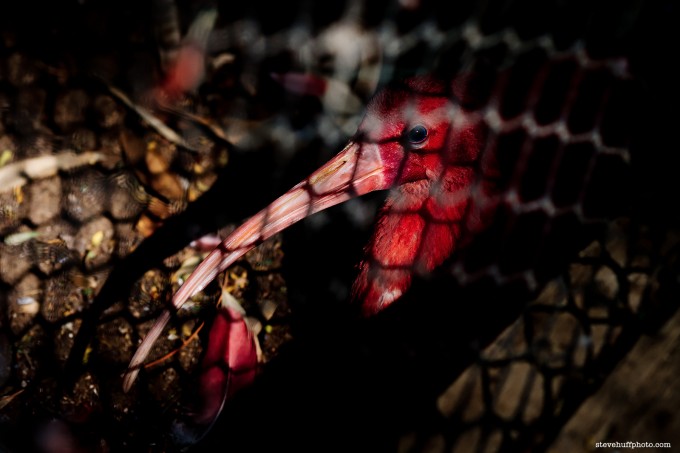
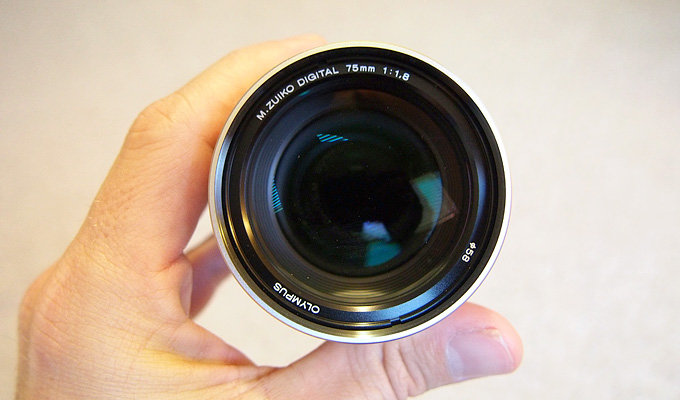

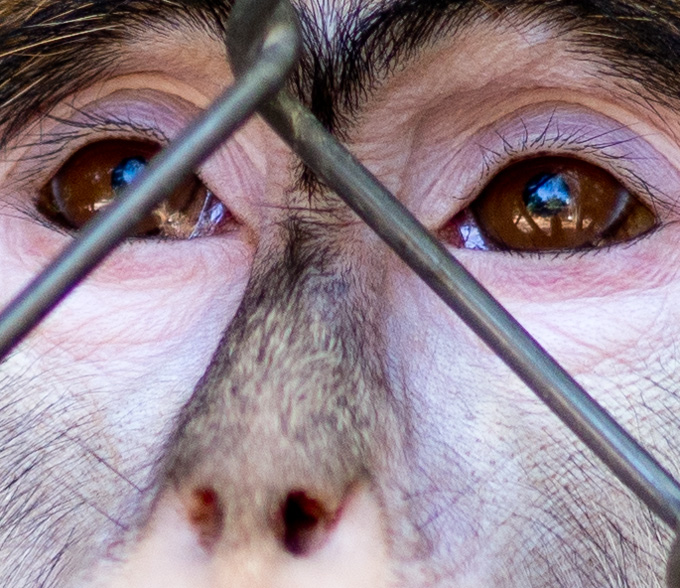
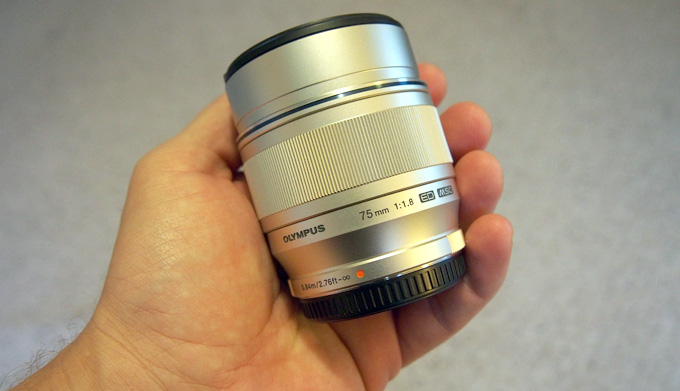
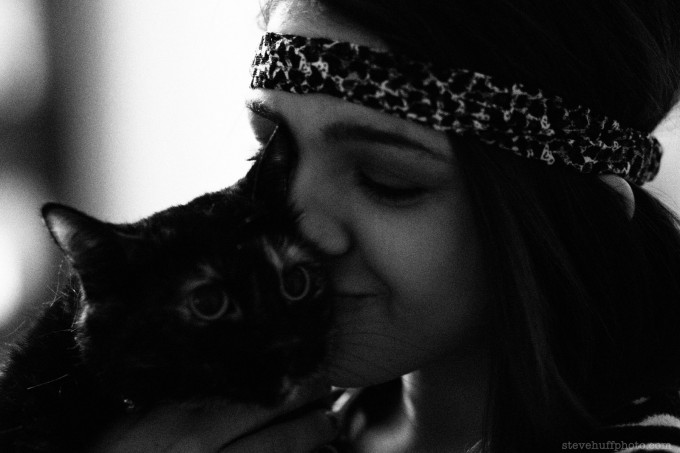
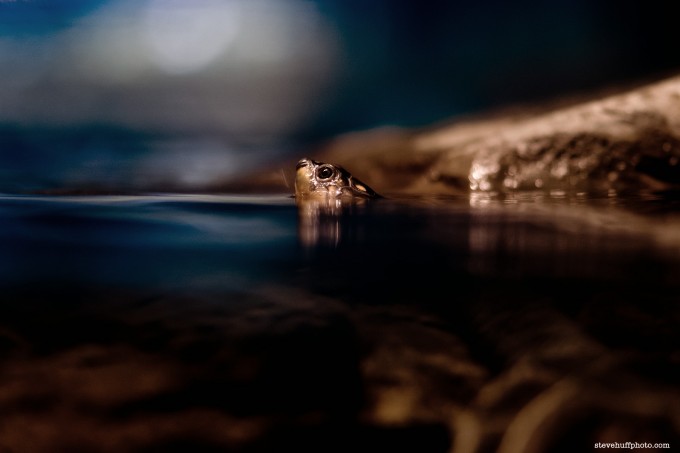
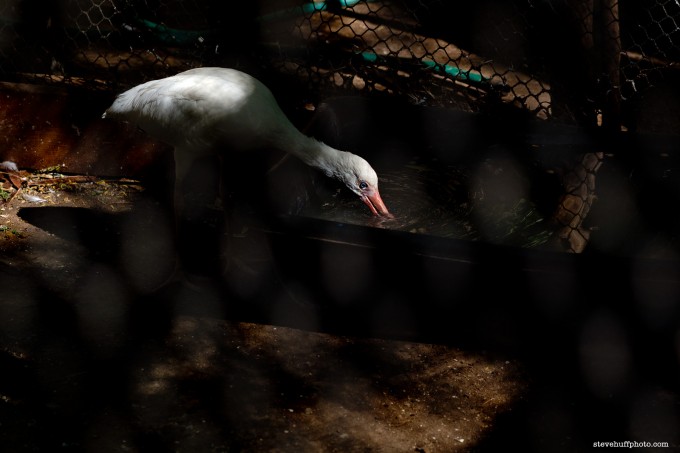

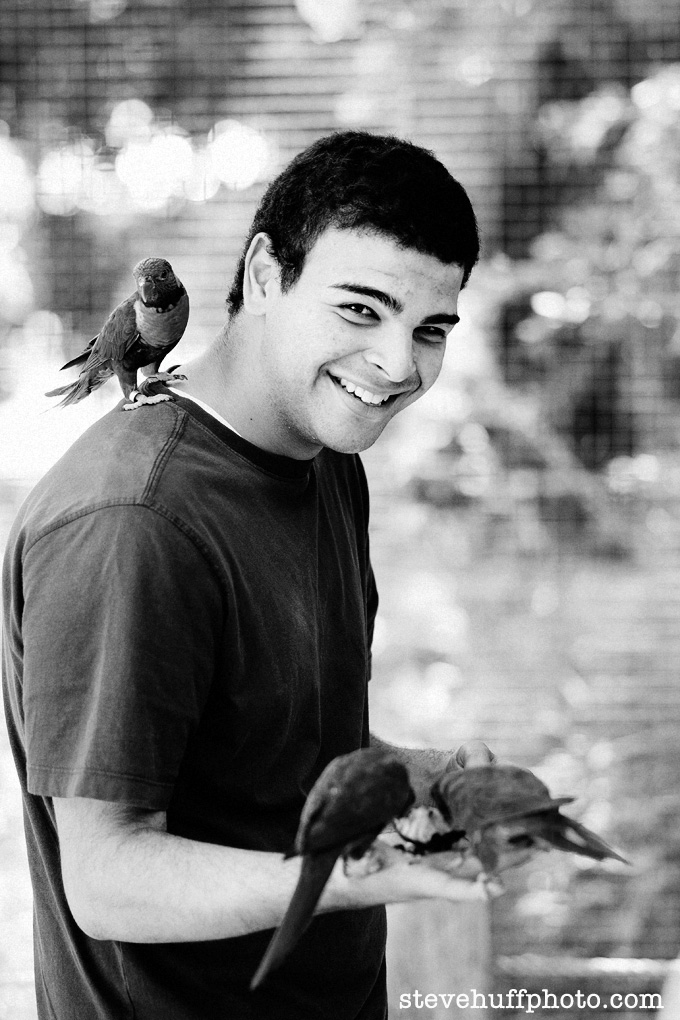
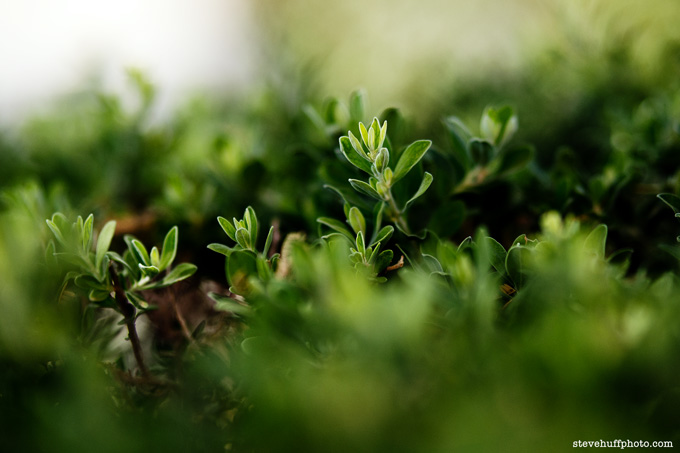
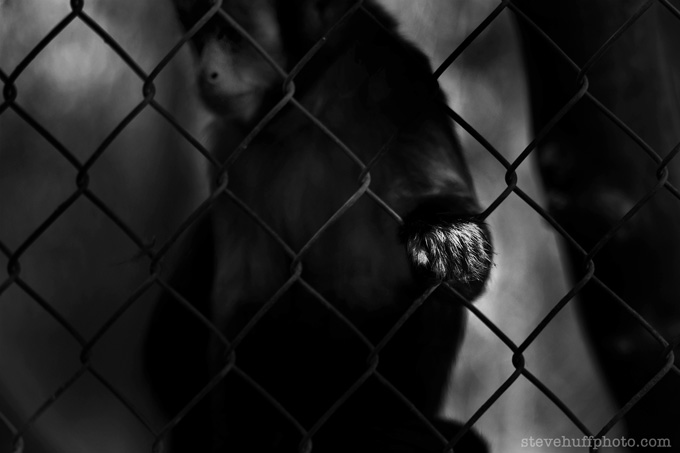
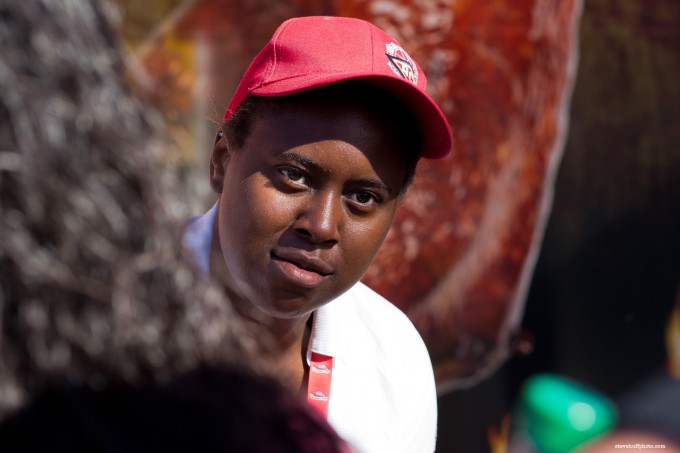
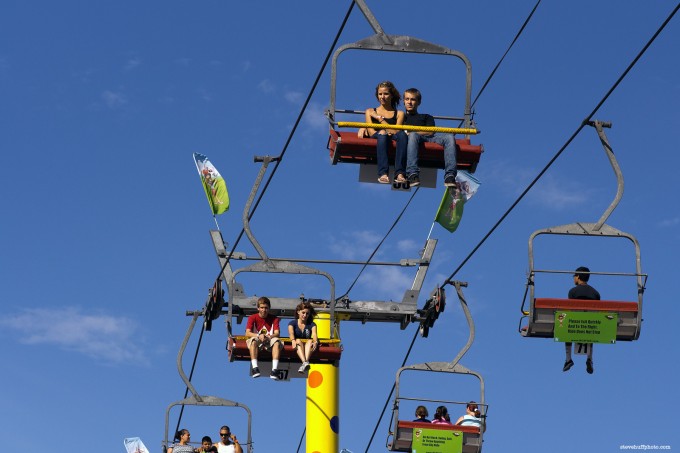
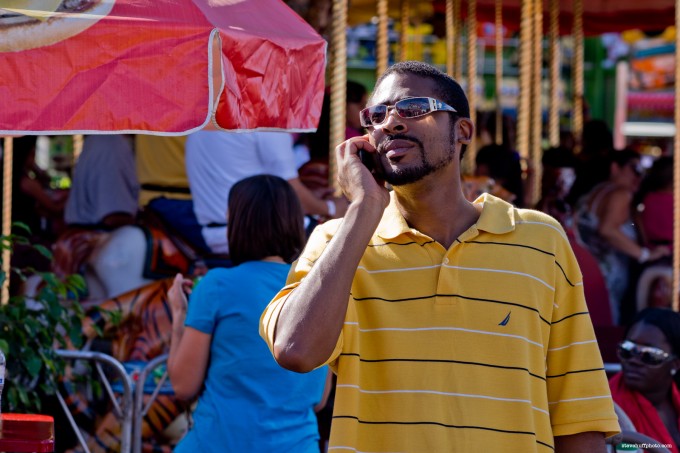
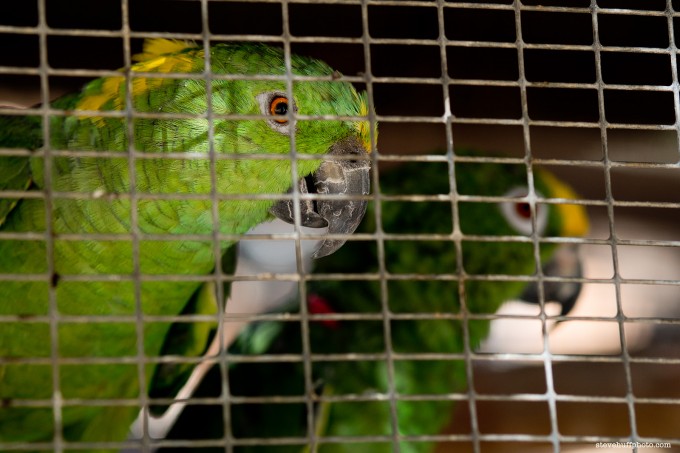
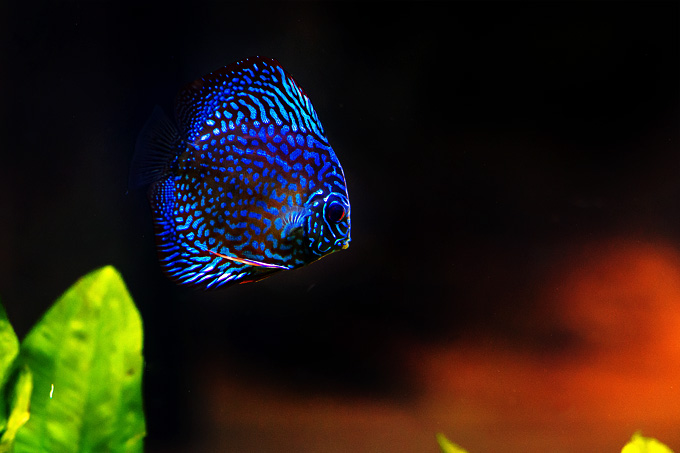

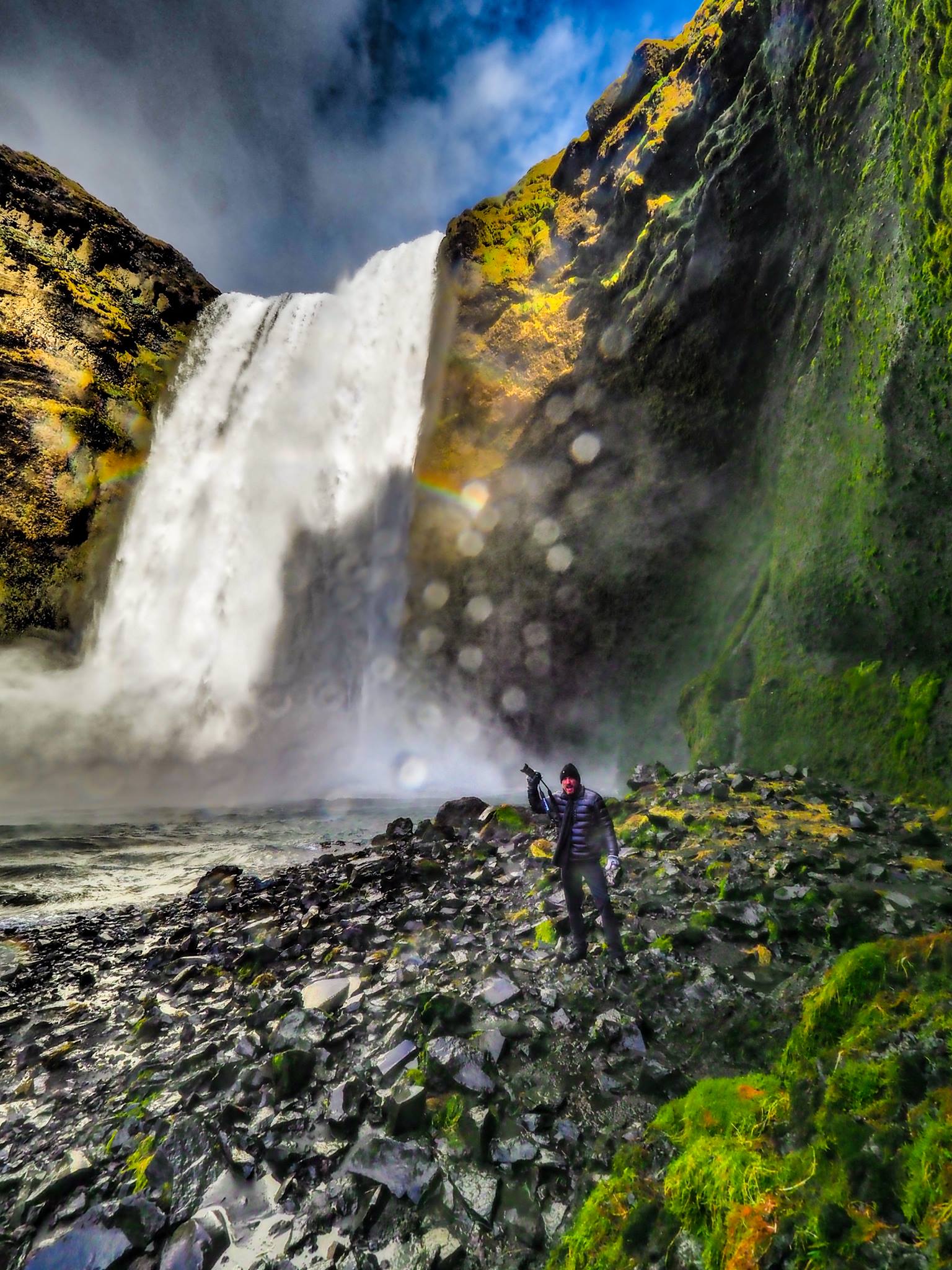
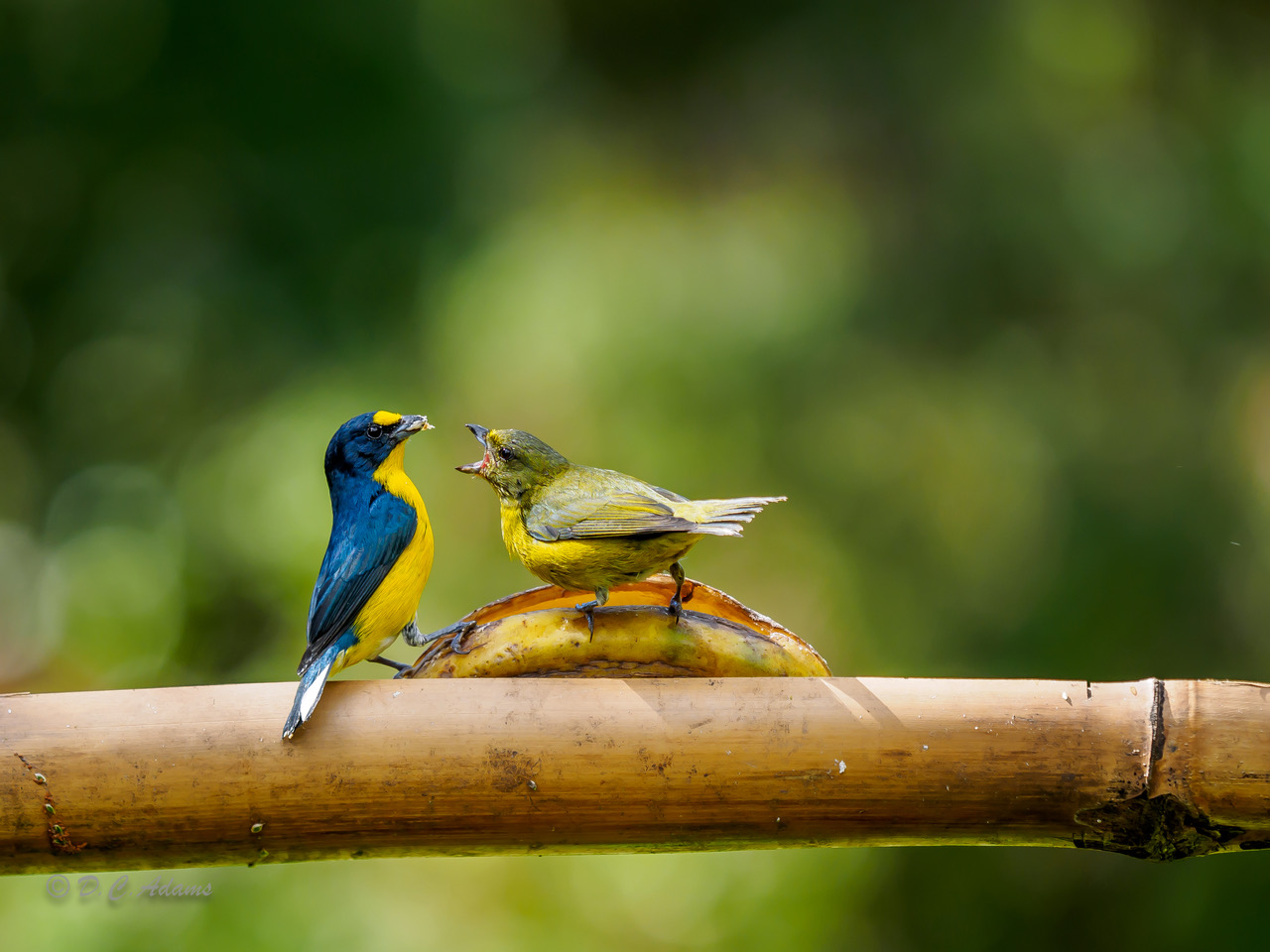
Hi Steve,
I’ve read a couple of your great and helpful reviews.
I was just wondering if I could ask your opinion for a good telephoto lens for the MFT system, for a beginner
I currently have a Oly 40-150mm f/4.0-5.6, but the image quality wasn’t as good as I was hoping for (given that it is cheap, I probably got what I paid for).
Thanks in advance!
Deke
Full frame used to be big, when there was a mirror behind the lens to divert the light up into the glass viewfinder.
The Sony A7 series cameras are full frame but without a bulky mirror, because they have an electronic viewfinder. The A7 cameras are about the same size as the Olympus E-M1, but with a sensor four times the size! Many of the LENSES are still big and bulky (..because they have to cover a much larger sensor than the Olympus cameras..) but the full frame CAMERAS are now much smaller.
I can’t tell you if they’re ugly or not: “beauty is in the eye of the beholder”.
Why all the full 35mm frame sensor cameras are utterly ugly? I would like to own one if they could make something that looks beautiful like Olympus cameras and Olympus lenses. Full frame has to be ugly, hard to carry and heavy as a rock.
I just bought the lens and love it. Is focusing “humming” noise normal for this lens?
The E-M5 did originally “hum” with any lens: it’s not the lens which is making the “humming”. If you update the camera’s firmware (..go to the Olympus cameras website, and look for ‘Firmware Update’..) that should get rid of the humming ..assuming that the camera has the original Version 1 firmware. (..Look in the camera’s own Menu to see which version of firmware it has..)
I have been with Olympus since the OM-1, through 2-10 and 4, then e-1 and E620 …now with the E-M5…what I can say is I have never had a bad experience with any Olympus lens… and the 60mm Macro has been the lens of choice for me…but now I am hunting for one of these babys!!!
Hey Steve, thanks fpr your review, your page is being really helpfull. Can i ask you about what programm you’re using to edit the Olympus OM-D videos?
you’re right! those monkeys should not be caged. the lens captured their sadness poignantly! very moving!
Great revioew Steve, thanks for that!
Since one year i have an EM5 and i love the system for its weight. I use it besides my Nikon D300s. My biggest complaint about M43 cameras is not the larger DOF but the AF-continu on this system. For shooting static objects i love it, but for moving objects you really can’t compare M43 to a DSLR IMHO.
Keep up the good work!
I’ve started to roam the internet looking for information about the infamous Oly OMD. Everyone raving to the moon about olympus and olympus lenses. Where have all of you been? As an Oly user since the first 4/3 system came out, I’ve been raving about Olympus to no avail. I can’t tell you how many times I’ve had someone look at my images on the web, printed, in a class and they ask me about my camera. As soon as I said the first sylable, “oly” they would walk away. Anyway, have you been to your doctor lately…any equipment made for “looking” (ex. colonoscopy machine) all have the Olympus logo, not Canon, not Nike.
BTW, great blog…will go to BH when I make plans to purchase this little miracle!!
Great review, I have read through quite a lot of your stuff and I am making the move to an OM-D ASAP! I haven’t read through all of the comments above, so I am sorry if you have already answered this question; how far were you standing away from the subject to the the awesome shot of the monkey through the fence? Being a 150mm equivalent I am guessing you we’re standing 15ft away? I am looking at getting into portraits and so I want to be able to snap face shots and full body shots in pretty confined spaces, I wondered how this would measure up being such a long 35mm equivalent? Thanks!
I was probably 10-15 feet away from the Monkey. Being a 150mm equivalent does make it LONG but it is indeed a beautiful lens.
I thought so, the shots look amazing, and the IQ is very impressive. What do you think about using the 75mm vs the 45mm for portraits, both face and full body?
Thanks for the excellent images and review of both this lens and the OMD EM5. I was just at the local shop today handling this and the Fuji X-E1. A difficult choice if you rely on “wow images.” From a handling perspective, I was immediately drawn to the OMD. Just hope that the image quality is comparable between these two. Any thoughts?
And thanks again.
They are “different” – the Fuji has something about it with the IQ that is special but then again there are some RAW issues when using Adobe converters. The OM-D is a jack of all trades and it does them all very well. Oly has the Oly colors and look, Fuji the Fuji color and look. Oly has more lenses, Fuji has a couple good ones. Fuji looks cooler with it’s retro style (if that is your thing) and the Oly is like a mini DSLR. Both are great cameras. Oly is faster and more responsive and can truly out out amazing quality with the right lenses.
Thanks for the review, very helpful.
I see you put up a photo of the 75 in black. Do you know what countries this is available in?
No, it is not made in black. The photo is of the silver one in black and white.
I enjoyed your review and loved the photos! And that said, let me echo what i believe you referred to before in another review–namely the sadness of the faces in zoo animals. they absolutely do not belong there. thanks, too, for gently suggesting this line of inquiry.
Steve,
what weather-sealed lenses would you recommend for use with the Olympus OM D 5 ?
There is only one I believe, the kit zoom 12-50 and it is not the best lens you can get.
Steve, what about the new Panny 12-35? Isn’t that weather-sealed?
Thanks for this superb review of the Oly 75!
Recently purchased the 45mm 1.8 and took it on the road with me to Paris for 2 weeks along with the 12mm 1.2 and the Pany 20mm 1.7. The 45mm 1.8 is a superb lens for the $ and sharp wide open with excellent contrast and edge to edge sharpness. The 75mm by all accounts is an exceptional lens, and would have a bit more reach, but I’m really in the market for a telephoto zoom lens for the OMD5. Its something that is lacking from my Oly kit. Steve do you or any of your followers have a top notch recommendation for a superb telephoto zoom lens in the 100-300 range for the OMD5 system? Love to get some feed back on this. Steve thanks again for have a rock solid blog with real world camera love.
Funny: I’ve just got back from a week in Paris with an OM-D and a few lenses (..Panny 20mm, Oly 75mm, etc). (..And with a few other cameras, to create some comparison shots which I’ll send to Steve to show here.)
If you’re looking for a 100-300mm zoom, there is, of course, the excellent Panny 100-300mm: light, fast to focus, and gives great, really sharp results! It ‘trombones’ out a long way, when fully extended to 300mm (600mm equivalent), but as it’s a lightweight I find that doesn’t really matter. It behaves, of course (..in terms of a 35mm full-frame camera..) like a full-frame 200-600mm would. A little contrast inevitably falls away as you use the longer end of the zoom ..as generally happens with longer lenses.. but you can easily tweak that back up when you put your pics on your computer.
So if you want a “100-300mm”, that Panasonic is the one to get. If you’re actually looking for a 50-150mm lens – which would behave on micro4/3 like a 100-300mm does on 35mm format – then the Olympus 40-150mm behaves like a full-frame 80-300mm lens ..but is far smaller and more compact than any full-size 80-300mm!
(You didn’t say whether you want something which behaves like a ‘true’ 35mm-format 100-300mm, or a 100-300mm specifically for m4/3 format ..which would be equivalent to 200-600mm on 35mm format.)
I prefer, though, the versatility of the Oly 14-150mm zoom, because with just two lenses (Panny 7-14mm, Oly 14-150mm), everything’s covered from the equivalent – in 35mm full-frame terms – of ultra-wide 14mm to ultra-long 300mm ..with only two lenses.
For isolating items from their backgrounds – at closer distances than you’d use a 150mm/300mm for – the Panny 20mm f1.7, Olympus 45 f1.8 and Olympus 75mm f1.8 are terrific, with excellent ‘bite’ and contrast.
For versatility (..there’s that word again..) and reduced need to keep swapping lenses, the Olympus 14-150mm is great, although at shorter focal lengths (..say 14-90mm..) its smaller aperture (f4-f5.6) means that it doesn’t isolate things from their backgrounds as clearly as the wider aperture 20mm, 45mm and 75mm do.
David, thank you so much for stepping up and taking the time to share your knowledge. Hope you had a great time in Paris. Amazing city! I came back with some amazing images that I’m still editing.
It is versatility, reach, and compact size I’m looking for. I did check out (on line) the Pany 100-300 and although it fits the bill, not crazy about the “tromboning,” but still weighing the options. I’m intrigued by the new Pany 35-100mm 2.8 constant aperture. And pretty much fits the bill for compact size and filling in that reach gap for me.
//www.dpreview.com/news/2012/10/02/Just-posted-Panasonic-Lumix-G-Vario-35-100-mm-F2-8-OIS-preview-with-image-samples
Although having that crazy reach of the Pany 100-300 of 600mm is pretty intriguing. And looking at some of Ming Thien’s recent images shows just what it can do. Since I’ll be using it in day light or can use a tripod in the evening, the 4.5-5.6 aperture doesn’t bother me. Its just that I’ll be missing the range between 90mm and 200mm which i like when I’m shooting my Canon 70-200mm 2.8 L. Although, once again that longer reach would be stellar. It’s kind of like collecting all the camera bags I have over the years. Finding just the right one….
I’ll take a look at the Oly 14-150mm which i wasn’t aware of. The price is fantastic but not sure the optical quality is in line with some of their newest prime offerings. Aware that primes trump zooms, however the Pany 45-100 has gotten some great reviews so far. Not looking for the Holy Grail but top notch optics and willing to pay the price.
When you state: “(You didn’t say whether you want something which behaves like a ‘true’ 35mm-format 100-300mm, or a 100-300mm specifically for m4/3 format ..which would be equivalent to 200-600mm on 35mm format.)”
I have a question since I’m new to the MFT world and loving it.
What do you mean by a “true” 35mm-format?
Thank you again for your sharing your thoughts.
Cheers,
Marc-
“..I have a question since I’m new to the MFT world and loving it. What do you mean by a “true” 35mm-format?..”
Well, in the days of film – when cameras used 35mm movie film, until digital shooting came along – a 50mm lens was considered a ‘standard’ or ‘normal’ lens, as it gave (gives) a view roughly the width of what men see when looking straight ahead ..women tend to use wider peripheral vision, so a woman’s ‘normal’ view as she looks ahead would approximate to what a slightly ‘wider’ (shorter focal length) 40mm or 35mm lens sees.
Over the years, 50mm was treated as ‘standard’, 35mm and then 28mm became ‘wide’ (..the shorter focal length provides a wider view..) and 90mm and 135mm were considered ‘long’ or ‘telephoto’ ..till 200mm lenses and then 300mm lenses appeared.
So 50mm was standard (what you see with your own eyes), 28mm – or now 24mm – is wide, and 200mm is long.
BUT that changed when digital cameras came along, as – at first – digital sensors couldn’t be made (at sensible prices) as big as a frame of 35mm film, i.e; 36mm long x 24mm high.
Many digital SLRs – like Canon’s ground-breaking 300D / ‘Digital Rebel’ – had a smaller sensor, similar to the size of the short-lived APS (Advanced Photo System) film. Being a smaller sensor than 36mmx24mm, it was as if just the central area of a film frame was being used, with the edges of what the lens saw being cut off ..so a 50mm lens behaves as a 75mm lens (roughly) on than smaller APS or ‘DX’ sized sensor. In other words, when used on a smaller-than-35mm-frame sensor, lenses behave like ‘longer’ lenses.
With the advent of micro4/3 (..and Four Thirds before it, approximately the size of 110-size film..) the sensor size was reduced to one quarter the size of a frame of 35mm film ..it’s only 18mm × 13.5mm, with an actual imaging area of 17.3mm × 13.0mm (..thank you, Wikipedia!..) compared with the “full 35mm-film frame size” of 36mm x 24mm.
So only a small central region of a 50mm lens (..designed for 35mm film, or for a “full-frame” sensor..) actually shines a picture onto the small m4/3 sensor, so it’s as if the 50mm lens becomes, effectively, pretty much the same as a 100mm lens behaves on full-size-frame.
So the rule of thumb is that you use a 25mm lens on an m4/3 camera to get the same appearance (approximately ..don’t even start to think about depth-of-field just yet..) as a 50mm ‘standard’ lens gives on a frame of 35mm film or on a “full-frame” digital sensor, like the one in the Leica M9, or in the Canon 5DMkII, etcetera.
Still with me?
You mention that you use a Canon 70-200mm f2.8. On a “full-frame” camera – e.g; a Canon 5DMkIII – that gives a slight ‘telephoto’ (magnified, slightly larger than normal vision) effect at 70mm, and a 4x-bigger-than-normal effect at the 200mm end.
But I don’t know if you use your 70-200mm zoom on a 5D or on a camera with a smaller APS-size sensor. If on an APS-sized sensor, the 70-200mm will magnify more, and behave (roughly) like a 112-320mm lens would on a 5D. So at its 70mm end things’ll be roughly twice as large as seen normally (naked eye), and at the 200mm end things’ll look roughly 6x larger – and nearer – than normal.
Put the same lens on an m4/3 camera – e.g; on an OM-D – and it’d magnify even more, and behave like a 140-400mm lens!
I didn’t know if you were looking for a “..telephoto zoom lens in the 100-300 range..” meaning one which starts at twice ‘normal’ view and extends to 6x normal view ..which is how a 100-300mm behaves on “full-frame” ..or if you were taking into account the effective doubling of its range when used on an OM-D, which makes a 100-300mm behave (roughly) the same as a 200-600mm lens on “full-frame”.
I didn’t know how you were comparing lenses ..as if they’re on a 35mm film camera, or if you’re just using the numbers which the makers stamp on lenses.
Clear example; a 25mm lens is a ‘normal’ lens on m4/3, 12mm is ‘wide’ on m4/3, and 75mm is ‘long’ on m4/3.
But someone used to “full-frame” thinks of 50mm as ‘normal’, 24mm as ‘wide’ and 150mm as ‘long’.
You say “..I’ll be missing the range between 90mm and 200mm which i like when I’m shooting my Canon 70-200mm 2.8 L..” but you don’t say – all importantly – which camera you use that lens on!
If you shoot a full-frame Canon (e.g; 5DMkII), and if you’d be missing “..the range between 90mm and 200mm..” then a lens for m4/3 which would cover that same range would be a 45-100mm ..exactly HALF the focal length(s) of 90-200.
But if you normally shoot an APS-size Canon, then the equivalent on m4/3 (..of your 90-200mm on APS..) would be a 70-160mm for m4/3 (..so a 100-300mm would be overkill). [If you normally use an APS-sized camera, divide your focal length by 1.25 to get the equivalent-appearing focal length for m4/3 ..so 200mm / 1.25 = 160mm.]
Gotta stop now, and have a cup of tea after all that! ..or maybe, just back from Paris, I’ll have a Cointreau.. cheers!
David, Great sense of humor and added knowledge to my personal Wiki. I am indeed using a 1D Mark III which is not full frame and does have a slight bit of magnification which i’ve gotten very used to over the years. The only time I wish I had a full frame was on a recent trip to Yosemite and could not get El Cap fully in the frame with the reflection of it in the river. I do fully understand what you are saying and your put it very clearly, thank you. Yes Cointreau or a Leffe beire. Spent two weeks there and although it rained almost every day at some point had a couple of days that I was blessed with blue skies and gorgeous clouds.
I’d love to see some sample of images that you shot with the 45-100mm Oly if you care to share. And when I’m flush with cash again, I may test out both the Oly you speak of and the Pany 35-100mm.
Happiness to you my friend.
M-
just a quick one if anyone knows,
the general rule on shutter speed is anything from 1 stop to double the focal length of a lens, my question is with Oly do you base that on whats written on the lens or the x2 focal lenght? my thought is still off the lens as its only the sensor size and position to the lens that doubles the focal length but i could be wrong?
regards
Anthony
I think you’re saying that the slowest handheld shutter speed you’d usually use with any lens is the ‘reciprocal’ of the lens’ focal length ..i.e; slowest with a 50mm lens would be 1/50th sec, slowest with 250mm lens would be 1/250th sec, etc.
Because a 75mm on micro4/3 behaves like a 150mm on full-frame, you’d theoretically use a slowest handheld shutter speed of 1/150th with the 75mm lens – BUT, the OM-D has such terrific stabilisation built into its body that you easily get about 2.5 stops worth of slower-speed capability because the sensor corrects for hand tremors. So you CAN shoot at the reciprocal of what’s stamped on the lens when using the OM-D ..e.g; at 1/75th when using the 75mm lens, or even slower.
That’s another of the great ‘usability features’ of the OM-D; less to worry about! Great stabilisation, so you can use slower shutter speeds with long, or small-aperture, lenses, compared with the minimum shutter speeds you’d need to use with bigger “full-frame” SLRs.
Totally agree, OM-D’s in body stabilization is phenomenal. It’s another reason why I love this camera so much, you can mount [almost] any legacy glass to the camera and enjoy the 5-axis stabilization. I’ve shot handheld with an old 200mm Nikon tele mounted and was amazed at the results (admittedly I had to use some Army sharpshooting techniques as well).
Jonny, thank you for your reply! I certainly will (and do) research various sources regarding the performance of the OM-D System, before making the move from my very nice PENTAX K-5 kit. Can’t afford both systems, unfortunately! Though I don’t shoot Action/Sports, but rather more “static” subjects like landscapes, architecture, macro, and products (Please see totalqualityphoto.com for samples of my work.), my main concern is retaining image sharpness and fine detail on extremely large prints, maximum 24×36. The K-5 (APS-C) sensor handles it nicely. Having had the otherwise nice Panny G2 (with the very nice Panny 20mm f/1.7 pancake), I am not unfamiliar with the characteristics of m4/3. I just found that I could not retain detail (at least to my quite high standard) above 8×10. That’s what makes me so curious as to how Olympus improved the state-of-the-art with the EM-5 sensor (coupled with the reportedly awesome Olympus Primes like the 12, 48, and 75)! Thanks again!
great review steve
I already got this “Crazy” lens
now my lens are 25mm f1.4 (panaleica), 45mm f1.8 (m.zuiko) and 75mm f1.8 (m.zuiko) for my OM-D
some of my shoot use 75mm f1.8: http://www.flickr.com/photos/taufiksurinegara/8022534338/in/photostream
Lovely lens, but it still boggles the mind why Olympus chose to produce this in silver!
The black OMD, with its whisper quite shutter, coupled with the 75mm (150mm equivalent) is the perfect live event camera. I think Olympus miss read the times [at least here in the US and Europe] where street and live event shooters can’t haul out a big honking silver piece of glass, calling attention to themselves.
The OM-D and NEX-7 are great discreet cameras, but it seems like both Sony and Oly have this strange passion for lens designs that cry for attention.
Great point, Derekdj! As one who is strongly considering jumping into the OM-D System, I too, would rather shoot discretely with a black lens on a black OM-D. I think some manufacturers are making lenses in both black and silver (or white), so that we have the option. In any case, my only hesitation is reading more reviews of the OM-D and various Olympus primes, and figuring out if I’d lose anything in terms of image sharpness and detail on large prints (16×20 to 24×36), as compared to my Pentax K-5 (APS-C) kit.
I really like your work at this focal length Steve you really show the potential of this combo
And your shots a while ago with the 75 Summilux were also awesome I know you like 35 and 50 mm do you own anything in this focal length ?
Hi Steve, this review and comments were enough to push me over the edge and I’ve ordered my OM-D, hopefully in time for my birthday next weekend. One question about the Gariz case if I can, I see the tripod mount on the side of the body, in what must be the Gariz own metal base. Have you tried this out and can you comment on its stability with a decent sized M4/3 lens? I’m going to be using mine with the Panny 100-300mm ultra zoom, I don’t want to risk it with the case if its not safe /stable. Thanks, James
I own and shoot side by side canon 5dm3 and Olympus OM-d. I am a former user of Sony nex5n and 7 and all the Nikons including d800. Here are my thoughts re Omd
1. Omd is the best mirrorless camera on the market and the most exciting to use. I carry it much more often then my canon 5dm3.
2. 2 areas where omd loses to Nikons and canon 5dm3 is 1) continuous AF. I shot a model side by side my canon 5dm3 and omd. An elementary task such as model walking toward the camera which 5dm3 or d700/800 can do with its eyes close, is a fail with omd. It struggled and could not keep up. I was using best m43 lenses. It just could not in single AF mode or continuous AF mode. For 5dm3 it was kids play.
2) viewfinder black out when shooting continuous frames. That has been a problem on every mirrorless. Sonys are actually slightly better than other mirrorless there. Basically if u shoot anything at 5/6fps on any DSLR with optical viewfinder u can see every shot and panning is easy. With mirrorless u see the first shot and then everything freezes and u have to guess where your bird in flight is next.
For anything else omd is amazing and it’s low light performance is spectacular.
Thanks David, great to get such valuable ‘hands on’ input, much appreciated.
Steve, I’ve been following your site for years and haven’t left a comment, for some reason, until now.
I recently completely turned over my entire Nikon system-D700 and many many lenses-to ebay heaven and bought the X-Pro1.
But after a couple months even that felt big so I bought the X100 Black Edition and freaking love it.
The video the OM-D produces is spectacular and I’m now thinking of how I either make room for the OM-D or take a hard look at the X-Pro1 for moving off to ebay.
Either way the camera is only as good as it is used and I just got tired of lugging first a Canon 1DS Mark II and then my D700 around as I travel a lot for work.
Now with the X100 I have something that is on me all the time.
How often do you use either the X100 or OM-D in everyday life?
Just curious and keep up the great site!
Jack I nearly bought the X1 Pro but ended up skipping it and straight to the x100 for that very reason. It can fit in my pocket no problem. Take it every where. Had an old 20D I sold along with numerous glass i’d “invested” in!
I have thought about the same addition as you, given the size, fast auto focus and some other features but might soon take me down that road again of buying more lenses because they are there…..and eventually i end up not using the majority of them!
I think if i buy anything it’ll either be replace the x100 with the Rx1 or buy an M9 with a 50mm lens …….that is a bigger decision though 🙂 and keep the x100.
Steve (or anyone else):
How would you rate it against the 45mm for portraits? Is a flatten effect visible?
I am really considering it but I really dont think I need it, that I will do fine with my 45mm f/1.8
you should read this review,.
http://blog.mingthein.com/2012/07/22/review-the-olympus-zd-751-8-for-micro-four-thirds/
Thanks for the review! It does look tempting enough, I like that you can focus it as close as 0.8m !
It’s great for portraits of grizzled, weather-beaten fishermen, but it’s too sharp for flattering pictures of women ..even after breathing on both ends of the lens; really needs nylon stretched over it to soften it – a la 1940s Hollywood – or a little Vaseline on the lens!
Hahaha, well, I do like portraits to show what some people call “imperfections” of the face…it makes it look natural but of course that is just me. 🙂
Hi Steve, nice review and nice pics too, but I must take exception to one comment you made.
You said “The only thing you lose shooting this over an APS- or full frame is some shallow depth of field effects with lenses”
Wrong!
Its true for full frame of course but when it comes to APS there’s almost no difference in DOF between MFT and APS. MFT and APS are much closer in size than either are to full frame, but this statement continues the myth that APS and FF are almost the same and that poor MFT is way behind.
I have to feel sorry for MFT as they are constantly being described in this way
This lens finally put me over the edge to sell my Canon 85 1.2 135L and 50 1.2 – love these lenses but the future is mirrorless and the OM-D with the Olympus and Panasonic primes are giving me what I need in a form factor that allows me to take the whole kit anywhere in a small carry bag.
M4/3 it’s a mature system with a good amount of different products, both in lenses and cameras.
Put it against FF is insane, because are different system for different purpose.
My bag(Hadley digital) contains O-md, 14 2.5, 20 1.7, 45 1.8, 45-175 4.0-5.6, clip flash, flexible tripod, lenspen, Cokin A holder with two rings, 4 Kood filters and i’m fully satisfied in almost every situation, lightweight and versatile system.
My friend in his bag have a 5d MarkII, 50 1.4, 24-105 4.0(generally he left at home his 70-200 2.8 because too heavy for daily use), a great setup for his needs, but heavy and not so practical.
It’s a matter of needs, my gears are perfect for me, his gears are perfect for he.
This 75 looks fantastic, but it isn’t my cup of tea, probably i’m going to cheaper 60 Macro 2.8, or for Voigtlander 25 0.95 instead.
WOW, people sure do hate it when nice photos come out of a micro 4/3 camera huh! Crazy psychological stuff going on here. Popcorn ready!!
Point… hehe.
Couldn’t agree with this review more. About the only thing you can be critical about WRT this lens is the weight and the focal length. It’s ultra sharp and the bokeh is very pleasing. For the price this lens is a steal. I really like this lens for candid portraiture and short telephoto. Steve, if you like I can do you another daily inspiration with this lens… Just kidding!
Anyway, here is an examples of a B&W shot I took with it at F2 on the E-M5. It is so sharp its painful! http://www.flickr.com/photos/sgoldswo/7912248110/in/photostream
“We all hate cat shots right?” NO! Depends.
Hi Steve, great review,
this is indeed a superb lens as I have use it personally and like the DoF and bokeh. Others can view some of my test images here http://www.pbase.com/alexfoong/omd_em5__with_zuiko_m75mm_f18
Hey Steve, thanks as always, love the site!!
The turtle, ISO 2000, 1.8, 1/60……………………..WOW……………………….ISO 2000!! If a 4/3 sensor can generate that at 2000, game over isn’t it? However, with tech progressing as it does and G.A.S., can’t wait to see your review of both the X-E1 & RX1. They’ll all ‘do what they do’ of course, but what a trio; 4/3, APS-C & FF! After reading what you’ve said about the Sony so far, feels like we’re at a point in time where IQ at relatively low/normal ISO levels (say to 6400……………6400!!!!) isn’t really an issue anymore, it’s more when the discussion hits 25000!!!… lol…. So what’s my point, we’ll be splitting the same hairs about 4/3 v APS-C v FF at 25000; but does it really matter? How often do we shoot at 25000; not often because up until recently, we couldn’t go there anyway!! The OM-D is putting out amazing stuff and the conversation around it’s virtues as a quality tool are pointless – period! The fact is, it’s going where FF sensors have been and doing a mighty job, is it not??
BTW; I don’t own one, but I’m sure as hell thinking about it…………………and an X-E1…………………….and an RX1……………….lol
As usual, superb review, Steve! I think you are making me lean towards the OM-D EM-5 and the 3 Oly optics, the 12, 45, and 75. (I was considering the Sony NEX-7 only with the Zeiss 25, but it appears that this Oly kit would hold its own against the Sony in terms of sharpness and detail, despite the smaller sensor and 50% lower resolution. Do you agree with this assessment, and have you done a comparison? Thanks!
I had a play with a friends kit,he has the 12,45 and the 75 and I must say its a nice combination,good image quality,good auto focus and as a walk around fun kit I am definately considering it.But in now way does it compete in a professional application to my 35mm kit…even a lot of studio,commercial togs think 35mm is too small.How many pro wedding togs use micro kits,a very very small percentage.How about sports…probably zero.Ok lets try photojournalists where a micro kit is probably closer in terms of the application,still probably less than 1%…lets get real here.We tried printing an iso 1600 image to a 30×20 and it did not hold up well,it was ok but not great where my D800 image was beautiful in its colour and tones…its good but not that good.Great review though Steve and for most people its a great combo.
Man, what’s killing me is that I still use Nikon FX DSLRs for work. If I wasn’t shooting for a living I’d get rid of all my Nikon gear and have a full M43 kit! The 75mm looks delish!
Great photos and amazing IQ from this lens on the OM-D!
You can actually see it in their eyes just how depressed the incarcerated monkeys are 🙂 Thank you providing your insights and real world reviews on these great cameras Steve – the OM-D has been on my radar since I first read about it here on your site.
As I have mentioned in previous posts I am anxiously awaiting the new Fujifilm X-E1 (and look forward to your guest review on the camera next week) … but if Fuji doesn’t get raw support from Aperture and CS6, I will be switching to Olympus.
(Fujifilm, the first warning shot has been fired and the gauntlet has been thrown … LOL!)
Jesus, I LOVE those shots. This camera is awesome, and this post makes me want one!! It’s so small and with the weather sealing, would be IDEAL here in London……NICE POST!
Small, but HEAVY, so the camera benefits from having Oly’s extra grip attached.
It is very nice to be able to get info about interesting products from this site, often very fast after their release. Based on your review, I am tempted by the lens. However, why is it that you always have to say negative things about other manufacturers when you make a review. The other day, I was reading your review about the Sony RX1 (a very exciting product, indeed) and you had to say: “I have much more respect for Sony than I do Canon or Nikon who are doing NOTHING revolutionary”. I feel that having the top 3 positions in the DxO testing in front of cameras with mid-format sensors costing up to 5 times more is pretty amazing (and indicates how exciting the future will be).
Here, do you really have to say “when they released the OM-D E-M5 they changed the M4/3 game more than Panasonic has ever done”? I had a fantastic time with the 3 years that I had the GF1 and the amazing 20mm. Furthermore, I feel that a whole community of people is praising what the GH1 and GH2 have done for video (even if I don’t care much about video)). The success of M4/3 is that both Olympus and Panasonic have contributed to built a real system. You also mention that this lens is much smaller than Nikon and Canon 85mm f1.4. You seem to forget that both offer a 85mm f1.8 that is much smaller and cheaper than their f1.4 offering. I have the 85mm f1.8 fron Nikon and carry it easily in my pocket (still, I would prefer to have the f1.4 even if it is bigger). In my opinion, 75mm (150mm) is a bit long for portrait, as you have to be too far from your subject.
When I buy a product, it is because I think it will fit my needs and what I want to accomplish with photography. No need to convince me that the other manufacturers are so much less interesting.
Don’t get me wrong, I feel that your site, and opinion, is an important source of information. The bashing is not needed to make this site great.
I do not bash anyone..I write what I feel..key word is “I” – I still feel Nikon and Canon drag their feet to protect their DSLR market. That is obvious, especially with the EOS M. Panasonic is great, loved the GF1..hated the GF2, GF3, etc. This is a photo site, not video so I do not go into the video specs of the GH series though I really enjoyed the G2 I was not a fan of the GH2 simply because I am interested in the photos, not video so much. So I just write what is on my mind and I feel Oly has outpaced Panasonic when it comes to M4/3 image taking cameras 🙂 I feel Nikon and Canon have slacked purposely due to their DSLR line.
Maybe you should try a DSLR again and figure out what they are good for. They are much better for action and breadth of choices for lenses etc. You think there isn’t a difference with the OM-D and a Nikon/Canon DSLR etc but yet there is profound differences with a Fuji X100 and a Sony RX1 because it’s the newest hyped camera…..funny.
I just spent a week shooting a DSLR and it was 3X the size, 4X the weight, not any faster and my images did not look any better than what I get from my OM-D. LIke I said, of course there are differences – in DOF and some slight ISO difference. In regards to speed, quality of lenses, and IQ..no there is not. But you save a ton in size, weight and cash. Want Full Frame for shallow DOF effect? Get a Leica M, D700, D800 or 5D. For everything else the OM-D can rock it. If you are a PRO who shoots sports then go for the best pro cam you can get. If you are a PRO who shoots weddings, go for a full frame for the expected results. If you are an enthusiast like 98% of those who read this site, and who I write for..then I would recommend the OM-D 100% for just about any application. Those who claim the OM-D can not do what a DSLR does has never owned one, or maybe shot it with a kit zoom for a few minutes.
As for the RX1 vs X-Pro1, there are huge differences. Size, weight, and IQ is better with the RX1. Again, I shot both and frankly never did get on with the Fuji X Pro even after extensive use. I am the one who dubbed it “X-Slow 1” in my review and I am not the only one who had issues with that camera.
LIke I said before, I speak the truth and not everyone likes that I guess. But keep in mind, these are my opinions and thoughts after testing and using ALL cameras. You don’t have to like what I say or agree with it but know these are facts that come out of testing and using the cameras. Ive shot and owned a D700, 5DII..tested the D4 and D800. I could own any camera I want but I choose to own an OM-D and Leica M. Those are my current faves that are available today.
Thx for reading.
David/Steve,
I am very pleased with all the positive comments on the OM-D. I am strongly considering the OM-D EM-5 (with the Olympus primes and possibly the 12-50 kit lens, but am disturbed by one comment regarding focusing on a model walking slowing towards the camera…, i.e., that the OM-D “it’s a fail with omd. It struggled and could not keep up”. I know the OM-D is not a sports/action camera, but to have difficulty focusing on a slowly moving subject is quite surprising!
My main concern with the OM-D though, revolves around sensor size. I routinely print 24×36 poster prints with a Pentax K-5 (and some deliciously sharp Pentax FA and DA Limited lenses).The prints are sharp, and detailed (eith proper technique, tripod use, good lighting, low ISO, optimum aperture, etc.. My question is, can the OM-D handle poster printing (with same good lighting and technique)? Several years back, I had a Panasonic G2 (with the very good Panny 20mm f/1.7 pancake) that could not print above say, 8×10 without loss of image detail and fidelity. Thus, I went with Pentax APS-C and have been pleased with the output. However, having G.A.S, and wanting a lighter “Travel” kit, made me interested in the OM-D system. But I don’t want to sacrifice image quality (sharpness in particular)! Thank you.
I can’t tell you about continuous focus, as I don’t use it: I just shoot single shots or video, and single-shot focus with an OM-D and its fast-reaction lenses is terrific. Most (all?) people who have tried Continuous Focus with the OM-D, though, say that it’s very poor ..but as I haven’t used it, I can’t say.
You say you want to print 24″x36″ posters ..but you don’t say from what distance people will be viewing them. That’s the all-important consideration. The closer you get to any poster, the less sharp it appears, but from, say, three feet away an OM-D shot should be perfectly good. I used to shoot pics for cinema posters (to be seen from about 10 feet away) and an original Sony Mavica MVC-FD7 640×480 pixels floppy-disc camera was good enough for that!
The OM-D, and its lenses, is certainly good enough ..for me – but you may be more ‘demanding’, so you could only find out by taking an SD card to a camera shop, shooting a dozen shots with an OM-D, then taking the card home and printing some pics with it! ..Only using one yourself will let you decide if it does what satisfies you!
Hi David.
Thanks for your reply. Yes, I am aware of the effects of viewing distance with large prints. My current Pentax-made 24 x 36 prints are sharp pretty much at any normal viewing distance (2-4 ft.). I was actually referring to the difference in sensor size between these two systems (not resolution, as the OM-D and Pentax K-5 are both 16 megapixels). I’ve heard others say that printing this large with the OM-D wouldn’t be an issue, due to the advanced sensor (not to mention the very high-quality optics of Olympus (and Panasonic for that matter)! I was also considering the Fuji X-E1, but would be sacrificing the weather-sealing, ergonomics, IS, and lens options of the OM system. Continuing my research!
I think that Steve’s enthusiasm is what keeps a lot of us coming back to his site. It’s only natural that this works the other way when he expresses his lack of enthusiasm towards some manufacturers. They’re not little kids so I don’t think it’s going to do them any harm to hear some criticism. I’ve used and still use some Panasonic and Canon lenses/bodies but I’ve never taken it as a personal attack since I’ve had my frustrations as well.
Great review Steve, as per normal. Beaut of a lens. The monkey shots are staggering! The red bird contrast and colour are gorgeous too. Maybe not super useful, but I think it’s worth the save up. Cheers for the seemingly endless, quality reviews! 🙂
Great review Steve, as per normal. Beaut of a lens. The monkey shots are staggering! The red bird contrast and colour are gorgeous too. Maybe not super useful, but I think it’s worth the save up. Cheers for the seemingly endless, quality reviews! 🙂
You can get more DOF with this lens without a full frame sensor:
http://forums.dpreview.com/forums/thread/3282786
Sure, I had the 1st in the world review for that lens and it is also 4X the cost of the Olympus and will take you down to a 100mm on Micro 4/3 and is MF only. Great lens but that lens shows what it can do when on a Leica M full frame.
It is not a “great” lens. It’s falling apart for many people.
Interesting lens.
I dont get why people bitch (excuse my French) about the DoF, I get nice DoF and/or Bokeh with my 45mm and I bet this one will be even sweeter. It is a tad long for what I usually do so I will stay with my 45mm…which brings out the question: did you notice a flatten effect compared to the 45mm?
As always, great review Steve. It will be utter nonsense to say otherwise 😉
Excellent review Steve on an excellent lens. Using the 12, 45 and now the 75 on my OMD.
Could not be more pleased. This lens is so sharp you need gloves. Shooting alongside guys from the AP, Getty, Reuters, NY Times and other NYC major newspapers it and the OMD holds it’s own.
Wonderful image quality, lovely camera but this: “and the OM-D as a tool that can do anything the big guys can do” is of course utter nonsense.
Unless of course you have no idea, and are not particularly interested in, what DoF means, and what a full frame sensor can do.
Rock on…
utter nonsense? Lol…let me guess..you do not own an OM-D nor did you read where I wrote “The only thing you lose shooting this over an APS- or full frame is some shallow depth of field effects with lenses”
The OM-D does EVERYTHING any DSLR can do besides extreme shallow DOF effects – and of course using specialized tilt shift lenses, which very few do these days.
Great shoots you took at low ISO – really good – but ISO 2500 looks horrible. So no, it cannot do high ISO like an APS-C or FF either.
Are you referring to the photo that uses the grainy b&w filter??
Seems like you need some Olympus M4/3 education. That 2500 shot was taken in “GRAINY B&W MODE” as in “Art Filter” as in “It adds grain and dark blacks to the photo” as in, “that is the look of that filter”. ISO 2500 on the OMD stands up to APS-C and some FF.
Ok, I overlooked the grainy mode, which still look horrible in my opinion, not the content of the image and the framing 🙂
Didn’t want to spoil your enthusiasm, but the fact is that the OM-D is not even close in high ISO performance to any of the newer FF cameras I know of. Even the 4 year old Nikon D700 destroys it easily in that regard and the quite new APS-C Nikon D3200 has good deal better high ISO performance too.
There is nothing special about it, bigger sensors are always better than smaller sensors in high ISO performance at least if they are from the same generation.
Whatever DXO might say, in my opinion, the results from the E-M5 at high ISO are comparable with those of the NEX-5N and better than those of the NEX-7 in real world use.
You may be right about that and one thing is absolutely sure, the new OM-D is a lot better regarding high ISO performance than the older generation of M4/3s like the E-P1 and E-P2 which I have owned.
“bigger sensors are always better than smaller sensors in high ISO performance at least if they are from the same generation.” This is an absurd statement (I’m sorry to say so) because what matters is not shooting at 12500 Iso with skins that look like plastic but the overall quality of the pictures. I’ve used about every size of sensors, and owned a few FF (still have a M9), but no matter the size, what is important is the colors, contrast, skin tones, definition… And there, the OM-D is sky high. I absolutely love the pictures it gives me, I never had as much pleasure shooting a camera for a long time and would not trade it for any APS-C out there. About shallow depth of field, the difference of DOF between an APS-c and a M43 at 1.8 for a portrait is a handful of centimeters… So unless you just like portraits where only the left eye is on focus well a M43 can do the job. Instead of looking at numbers, try the OM-D and the 75mm…
It is not an absurd statement it is fact.
I never said anything about colors, contrast, skin tones or DOF, so don’t know why you bring that into the discussion.
For indoor sports for instance high ISO capabilities is a must. Also if you want to shoot in low light without a flash it is nice if high ISO output quality is good.
It is great that you enjoy the OM-D and it really is an incredible development in IQ from the older generations of M4/3.
The OM-D is probably the best M4/3 camera ever, but I was just discussing high ISO capability and nothing else and it is certainly not on par with todays best APS-C or FF cameras, but no surprise there.
I went to DxOMark to check your statement. Dynamic range and color depth are the same on the D700 and OM-D. It seems that the D700 has one stop and a half better ISO performance than the OM-D. Come on man.
If you can shoot sports with a 70-200 f/2.8 on a D700, then you can shoot sports with a 75mm f/1.8 on an OM-D.
Exactly.
“So unless you just like portraits where only the left eye is on focus well a M43 can do the job.”
This is a very important statement. I shoot mostly “full-frame” film, and I have learned from experience that shooting portraits wide open can easily ruin your shots because of the extreme shallow depth of field.
As an owner of both the D700 and the OM-D, I can assure you that the former does NOT “destroy” the OM-D in high ISO performance. They are, in fact, quite comparable up to 3200, and the drop off isn’t precipitous after that. Further, you gain at least 2-3 stops in the other direction because of the OM-Ds excellent internal VR and lack of a mirror…I can hand hold to 1/6″ on my OM-D and retain sharpness on a 90MM equivalent lens…can’t get anywhere close to that on my D700. I’m sure the D800’s sensor is a significant step up from the D700, but it’s also 3X the price of an OM-D (more if you include the chiropractic bills from carrying that kind of camera around all day). Autofocus (if you use it) is also considerably faster on the Olympus system with Zuiko lenses than on the Nikon’s, in my experience.
If you’re going to put the camera on a tripod and lug $2000 glass to a spot and shoot, the D series is great and unquestionably will outperform the OM-D in image quality and resolution. But if you’re on the move, shooting unpredictable people in unpredictable places, and on your feet all day, the OM-D will give you everything you need and more…
Agree 100%
Sure the OM-D is the incredible.
You have seen the light! 🙂 It sure is, especially for the cost. Will probably be my camera of the year for 2012 and only one other one is tied so far with it.
I don’t care what people say. At the end of the day I can carry a very capable camera body with four or five excellent primes in a small bag that wouldn’t even fit a full frame DSLR body with one prime alone. And the complete kit is lighter than a full frame DSLR body too.
AF focus tracking for sports on a DSLR will FAR outperform any mirrorless. Also the controls available on a DSLR are much more performance oriented than the OM-D. Keep in mind i have a D800E and an M9 and I prefer the M9 for most of what I do except sports.
True, (though the Nikon 1 system isn’t ‘”FAR” off) but it’s only a matter of time.
I agree with Jonny. I am glad so many really good cameras are coming onto the market and it sounds like the OM-D is near the top of the list. I don’t own one so I am not speaking from experience with that camera. However, I own another MFT system so I do know something about that format. Steve is wrong that the only difference with a full frame DSLR is depth of field. A top DSLR offers the best balance of IQ and versatility. The downside is size, weight and cost. Is there a fisheye for a MFT? A 110 degree lens? Long telephotos? I have owned and tried many cameras but only a DSLR like the Canon 5DIII will get razor sharp shots with a 200mm or 300mm telephoto of kids playing soccer. Like Jonny, I prefer my M9 for shots within the range of that camera because of the Leica lenses. But for very wide, very long or very fast shots, my 5DIII with lenses like the new 24-70 II zoom, either of the 70-200 zooms, the 8-15mm fisheye zoom, and hopefully the Zeiss 15mm prime (if it is ever finally released), is state of the art.
There is indeed a fisheye for M4/3, and a good one at that. There is also very nice tele options with the 35-100 2.8 Panasonic which will give you razor sharp 200mm photos. The 55-200 will give you very sharp 400mm photos. Micro 4/3, especially the OM-D is just as versatile as a DSLR, it is just that those who do not own one (the OM-D) just do not realize it because they do not own one. It is a very mature system and the new macro is astounding as well! Besides the Olympus 12mm will beat out the Canon 24-70 at 24 on a 5DIII for sharpness..how do I know? I compared them. The Olympus 12, 45, 75 and 60 are indeed state of the art, without all of the bulk and weight.
So I am not wrong but I have to say that you are. I would like to ask for your samples from the OM-D and 5DIII that tell me I am 🙂 I will state again with 100% reality…the only difference is depth of field and slight high ISO performance when compared to the better APS-C and FF cameras. Other than that the OM-D E-M5 with the 12, 45, 75 and 60 lenses are just as good as ANY DSLR for IQ, function and versatility. Throw in the fisheye and superb zoom if you like that sort of thing and you will be set.
Thanks for the reply. Like I said I have never tried the OM-D but I do have a Lumix GH1 and it is a pretty good camera but just not in the same league as the 5DIII or M9. That said, you may have convinced me to try the OM-D. Before that I am waiting for reviews on the GH3. Another site is testing one now and first impression is that it may be the best in class of mirrorless cameras. But I don’t know if that writer has tried the OM-D. Nice to have choices.
Don’t forget the excellent Panasonic 100-300mm ..same as 200-600mm on a full-frame SLR, but at least half the weight, and just as sharp as most full-frame long zooms.
Agree+10
Here ,if you guys want to see the 100-300mm
http://blog.mingthein.com/2012/09/20/review-the-panasonic-100-3004-5-6-lumix-g-vario-for-micro-four-thirds/
Jonny and George, I’ve shot Wimbledon and a test match (cricket) with an E-M5 and Olympus 75-300mm lens. No complaints here, in fact the extra DOF on M43s is handier than a DSLR… Try this:
http://www.flickr.com/photos/sgoldswo/7997848289/in/photostream
wrong, wrong, wrong…. this lens and the em-5 give me results as good than what I got with a 5DII and L (200 f2.8). In any light my friend. It’s the kit I now use for portrait, flower and some street photography.
I took a shot from with my D700 + 70-200mm F2.8 @ 150mm with F2.8 aperture and compare it with my OM-D +75mm and i found the result from M 4/3 is much more pleasing,.
is it the camera/OM-D or maybe the Lens
,.but this fact that the O-MD with its 5 Axis IBIS plus the light F1.8 of course is more faster than just F2.8,.
The color clarity and contrast from the lens is one of the best example of a fine glass maker,.not mention the sharpness of the glass,.you can see here
http://www.slrgear.com/reviews/showproduct.php/product/1521/cat/14
is sharper than any nikon and canon glass even zeiss or leica,.
try to compare the sharpness with canon L 400mm F2.8 Fluorite Lens which is 13000$,.
The dof difference between APS-C and mft is very low especially when you consider that mft lenses are already very good wide open while on aps-c you often have to step down at least one f-stop …. so it’s almost the same. Compared to FF there is a difference …true. But with the right lenses it can deliver what most photographers need. If the smallest possible depth of field would be the ultimate criterion even FF would be crap against medium format and this compared to large format. The big question is how much dof you really need. There is no perfect camera for every situation and while the classic dslrs are “at the moment” still superior in sports photography the OM-D makes them look like dinosaurs in some other situations. At the end of the day the type of camera won’t really matter, but when a photographer is tired or dismotivated because he’s carrying a heavy equipment around the whole day he might take less creative pictures and have a less pleasant charisma to strangers he might photograph….that matters.
Here’s work done by a pro photographer, Amos Chapple, using a GH2. http://imgur.com/a/EHdbq#8cpId
Most will never realize the full capabilities of todays modern, digital cameras. Almost always, a poor photo is due to inexperience, lack of proper skills and use good technique.
http://www.featureshoot.com/ really great site.
Wow. just wow. viewing from my phone but this lens really does have stunning rendering. I personally am not really into telephoto lenses, but this will be superb for those who are. And thinking of it in 150mm terms, its tiny! he’ll, even by 75mm terms its really small. Definitley a must buy for m 4/3.
Steve your photos taken at the Phoenix Zoo testing your new Olympus 75 F1.8 certainly bring fond memories as I lived in Phoenix for 26 years and our son and his family still reside in Phoenix and we visit as often as we can. Your reviewing style and honest approach to the equipment reviews is greatly appreciate. I own Canon, and Sony assorted cameras and lenses but i must say, The Olympus OM-D and lens combination are superb. I always look forward to your reviews.
Sounds like a great lens. Can’t wait for the Olympus 60mm macro lens review to come up.
http://blog.mingthein.com/2012/09/21/olympus-60-2-8-macro/
Should I get this lens or the considering the SLR Magic HyperPrime LM 50mm T0.95 as in this review?
http://forums.dpreview.com/forums/thread/3282786
The SLR Magic is a manual focus lens, far slower to focus than the autofocus Olympus.
Thanks for your review Steve.
The lens looks amazing and I’d love to get it, but can’t help feeling it may not be the best value for money because of its 75mm focal length vs. the price. Do you think you’ll be using it regularly once the novelty has worn off?
The 60mm marco looks a temping alternative and seems to have some pretty amazing early write ups. Any plans to review this one?
As always, thanks for inspiring me.
Matthew
The 60mm f/2.8 is every bit as sharp and contrasty as the 75mm f/1.8. Only if you pixelpeep, you can see a very small difference. The thing is, the maximum aperture is smaller. However, as a bonus you can take wonderful close ups and macro shots with the 60mm.